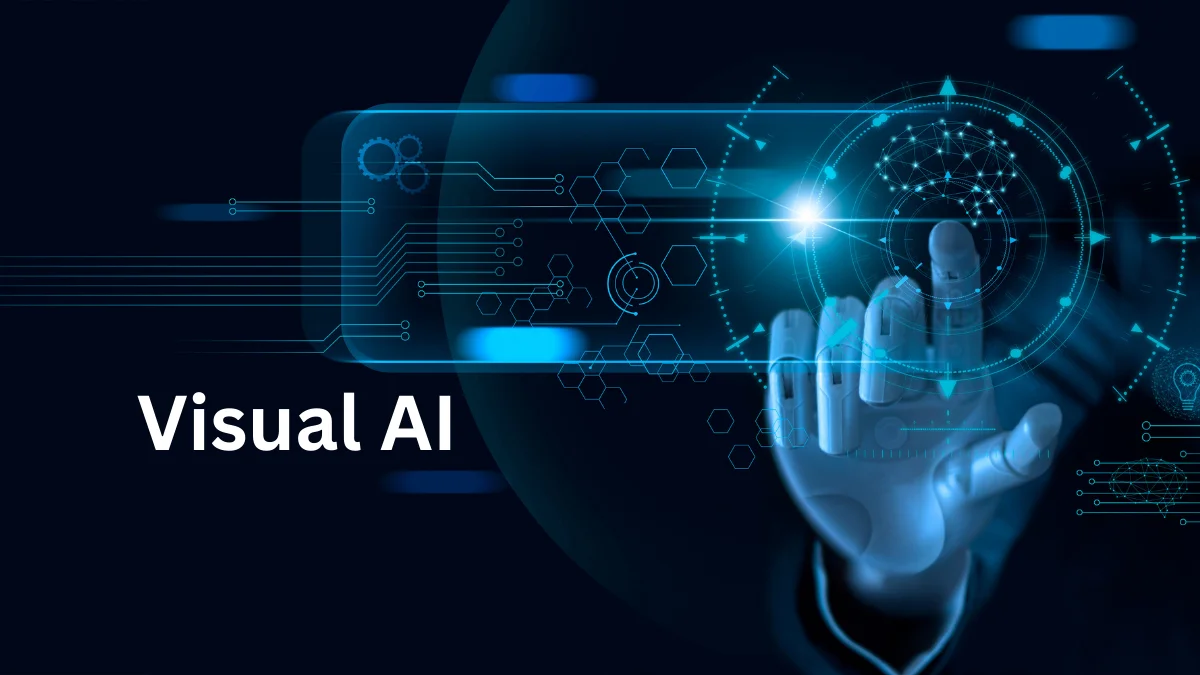
What is Visual AI
The world you live in is one that you can see. The social media you watch, the things you read online, and the world around you all give you visible information.
Visual AI is a field of computer science that teaches computers how to understand pictures and other visual data as humans do.
Many people also call it computer vision. Visual AI lets machines see, understand, and draw conclusions from pictures and videos based on the formula used.
According to Mordor Intelligence, the AI image recognition market is currently worth about $4.39 billion and is expected to grow to over $10 billion by 2028. This strong growth is happening at an average annual rate of around 19.94%.
Humans handle much visible information daily, such as reading road signs and recognizing people. More than half of the brain’s surface area is used to process what we see, and vision is responsible for about 80% to 85% of what we understand and react to. Vision is essential for humans, so it’s not surprising that it’s also becoming necessary for AI.
Visual AI is a branch of AI that uses visual data to give people, physical systems, or software the information they need to make wise choices and take action. Visual data includes things that can be seen and understood, like pictures, movies, radar, and 3D. It can be used to teach or motivate action. Here are some examples of Visual AI in action:
When testing software the old way, much testing has to be done by hand. Validating the whole digital experience, including functional testing, visual testing, and cross-browser testing, has been hard to do with automation for a long time, even at companies with advanced automated testing methods.
Automation Engineers have to write hard-to-use locators and complicated statements for each part they are testing because there is no good way to check the whole page. Besides, quality engineers and other software testers invest significant time to ensure that no bugs enter the current release, even after completing their work. They have to do this for every OS, browser, and sometimes even every gadget their users use.
Visual AI has much more to offer; we’re just beginning to scratch the surface of what it can do. Artificial intelligence has limits, but Visual AI will become even more critical in your lives as technology improves. However, take a look at what the future holds:
As time passes, Visual AI in e-commerce will be the most essential tool for making shopping more personalized. It will enable more advanced search features, like letting users look for goods using pictures instead of words, making the process easier to understand.
Visual AI can also improve the customer experience by making suggestions in real-time based on past sales and the style and tastes of the person looking at the items. Visual AI will help businesses better manage their stock by determining which goods will likely be widespread and predicting trends. This will cut down on waste and ensure that supply better meets demand.
Visuals are essential in this digital world because they set the tone and often the outcome of online exchanges. Seeing things is the best way to communicate online because people’s attention spans are getting shorter by the second and by generation. Our brains are made to tell stories through pictures and videos. You love the quick appeal of beautiful photos and videos that pull you in. It’s no longer just nice to have visuals; they’re essential to online conversation.
They help people get their point across on social media, where people look more mindlessly than ever. A picture can evoke feelings that words often fail to capture, while movies express ideas beyond the reach of language. Aside from this technology issue, the truth is simple: people no longer want to read lines. Both big and small businesses have noticed this change and acted quickly to follow these trends. Visuals aren’t just for social media; they’re necessary for any digital plan.
Visual AI can help simplify and speed up many jobs that people currently have to do by hand. Many places use it to make people safer. Security cameras use Visual AI to identify unusual behavior and alert the police. Visual AI is making things faster and better by helping you take better pictures and giving you better product suggestions. This is just the start. As the technology improves, Visual AI will be used in even more things, and you won’t be aware of it most of the time.
What is Vibe Coding? and How to Vibe up Your Dev Life without Writing Code
This post was last modified on May 24, 2025 10:29 pm
Vibe coding is a new way of building software using AI. Instead of writing code,…
AI is growing rapidly across the world, with countries racing to file patents. Surprisingly, China…
The global map for AI investments indicates that the U.S. is the first world power,…
LLaMA 4, DeepSeek, Gemini, and ChatGPT all have their strengths. LLaMA 4 works well for…
Perplexity AI Voice Assistant is a smart tool for Android devices that lets users perform…
Meta AI is a personal voice assistant app powered by Llama 4. It offers smart,…